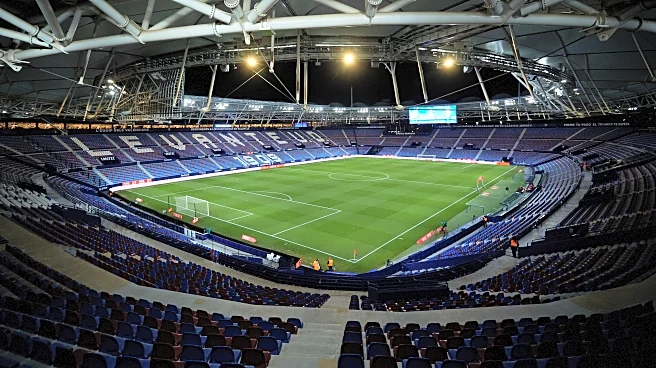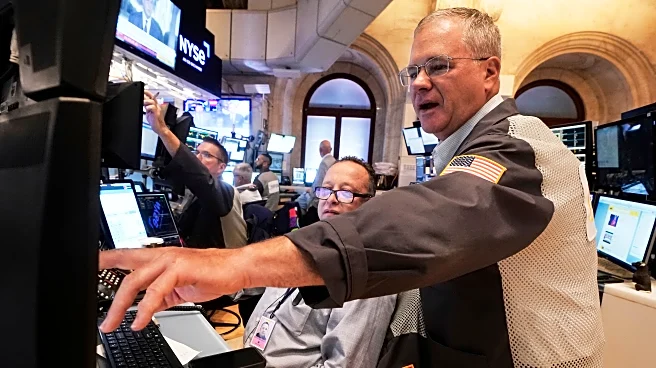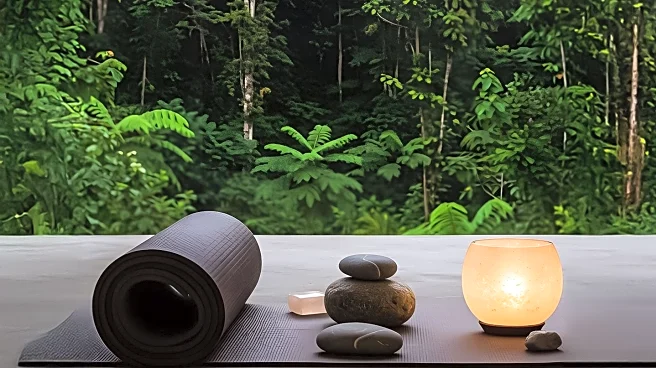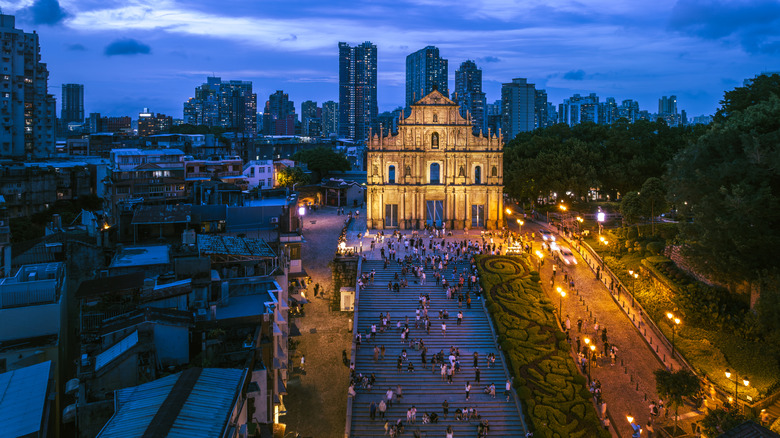
Europe's most well-known tourist destinations have become victims of their own success. Spain has reached an absolute breaking point regarding tourists, with the government working to combat overtourism and protests raging against travelers in cities like Barcelona. Santorini, the popular Greek island, is swarming with sightseers (3.4 million visitors per year on an island of 15,000-20,000 residents) to the point where it's practically impossible to enjoy oneself. Beloved downtowns like Prague's,
once the "Paris of the '90s," are so overtouristed that they've become unrecognizable. When faced with such conditions, it's no wonder travelers are turning elsewhere. According to marketing company Heepsy, some of the top non-European alternatives folks are visiting include Taiwan, Macao, the United Arab Emirates (UAE), Oman, and Qatar.
When compiling this list, Heepsy considered metrics like safety, average temperatures, and number of hotels. However, the study also factored in metrics like each location's quantity of Instagram hashtags and number of things to do — benchmarks that may not accurately measure the real popularity, quality, or value of a destination.
Nonetheless, visitors can enjoy themselves in each of the places on Heepsy's list, bearing proper expectations in mind. For example, many consider the UAE and Qatar to essentially be giant, city-sized malls. Meanwhile, coastal Oman can be seen as an alternative to European Mediterranean locations but with the desert at your back. Macao reflects a mixture of European and Chinese heritages and has a unique history involving Portuguese colonization, and Taiwan offers cityside attractions in Taipei and a beautiful, forested countryside.
Read more: The Most 'Overtouristed' Places In Europe
Taiwan Pairs Neon-Lit Markets With Countryside Scenery
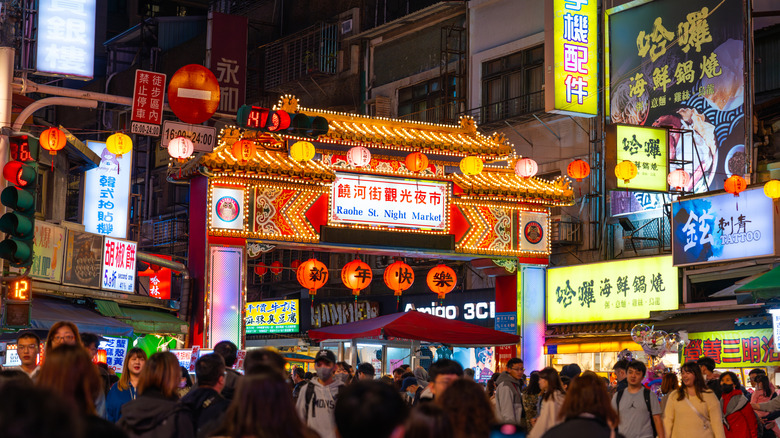
Taiwan is no stranger to international tourism, but it's still in the process of trying to regain its pre-COVID mark of 10 million tourists per year. Its capital city, Taipei, is stuffed with as many dim sum restaurants as it is cultural landmarks like Chiang Kai-shek Memorial Hall. Raohe Street Night Market, near the Keelung River, is a long-standing tourist favorite, a kaleidoscopic set of neon-lit shops and endless street food options accessible from 5 p.m. to midnight. Downtown, Taipei 101 looms large in the skyline as the tallest building in Taiwan and contains an 89th-floor observation deck set about 1,250 feet in the sky. You can also view Taipei 101 from one of Taipei's most widely-tread, in-city hiking trails up Elephant Mountain to a summit that affords a sprawling outlook over the city. And best of all, Taipei has an excellent, easy-to-use, citywide metro (with signs in English) that'll easily take you anywhere you want.
Those wanting to see the rest of Taiwan can journey along its string of west coast cities, like Taichung or Tainan, or venture into its east coast national parks, like Taroko or Yushan. Remember, the further you get from Taipei, the more it'll benefit you to speak some basic Taiwanese or Mandarin. And if you want to head into national parks, it'll be difficult without driving. Then again, you can get a taste of the Taiwanese countryside by heading to another tourist-favorite (especially amongst Japanese travelers, who account for most of Taiwan's tourists) spot, Jiufen. One of Asia's two most romantic destinations, the lantern-filled, terraced city is reminiscent of the scenery in Studio Ghibli's 2001 "Spirited Away."
The UAE Offers Ultra-Modern Cities And Desert Activities
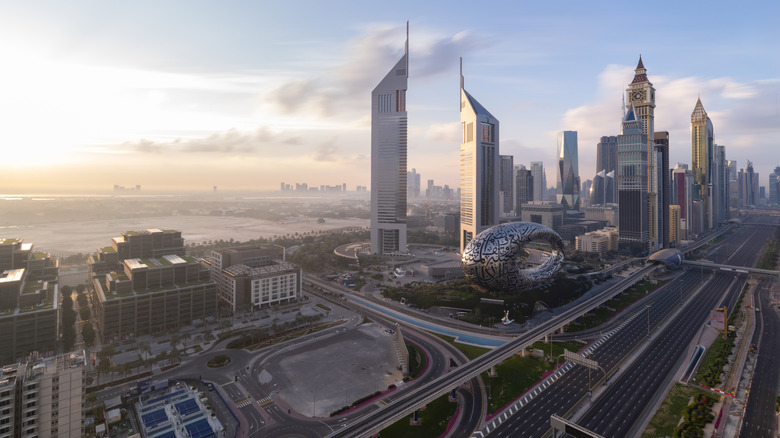
To many people, the UAE means Dubai and only Dubai. What began as a small fishing hub and grazing grounds for nomadic herders around 3,000 BCE transformed into a terraformed playground for the ultra-wealthy when Sheikh Rashid bin Saeed Al Maktoum uncovered oil in the 1960s. Now, expats account for about 85% of Dubai residents, and the city welcomed over 18 million visitors in 2024. Dubai and the UAE overall (including its lively and thrilling capital city of Abu Dhabi) are known for being generally safe, if only because its laws are so strict and its penalties so severe. Also, tourists would do well to remember that Dubai's glitz and glamour is built on the back of a horrendous human rights record that amounts to modern-day slavery under its kafala work system which imports laborers from Pakistan, Bangladesh, and India.
Bearing this is mind, visitors exploring Dubai will find an ultra-modern metropolis with the luxurious Dubai Mall as its centerpiece. Complete with aquarium, ice rink, kids play areas, haunted house, and more, the mall connects to the world's tallest building, the Burj Khalifa (about 2,716 feet), via an entryway near the aquarium. Outside the city, there are plenty of desert camel rides and ATV rentals targeted at tourists, plus Dubai's ever-famous tandem skydiving over its Palm Jumeirah islands.
Abu Dhabi has much of the same to offer but skews a bit more relaxed and artistically intriguing. Sheikh Zayed Grand Mosque — a staggeringly beautiful and sprawling 82-domed mosque — is an absolute must-see. The Louvre Abu Dhabi (which rented the Louvre name from France for $520 million in 2007) features a combination of art exhibits and hands-on creative activities.
Qatar Has World-Class Museums, Resorts, And Cityside Fun
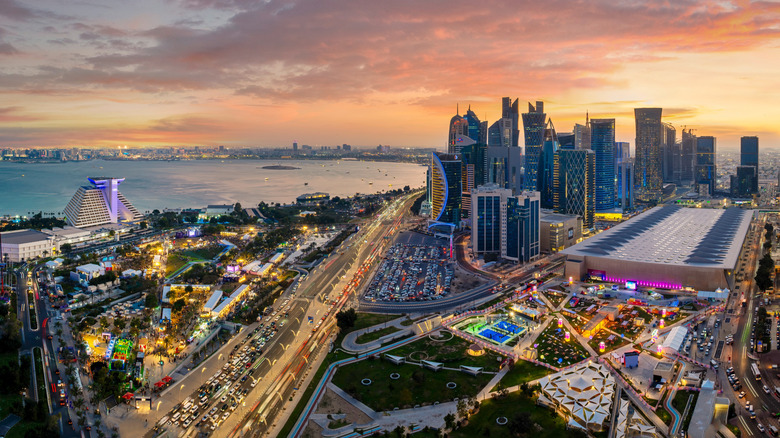
Even though Qatar is less known than its Persian Gulf neighbor, the UAE, it welcomed an all-time high of 1.5 million international visitors in the first quarter of 2025 alone. Riding the wave of attention garnered during the 2022 World Cup, which took place in Qatar, the relatively new, small, peninsular nation has all the basic amenities you'd find in a bulkier, wealthier cousin like Dubai. But, it comes with a bit more quirkiness, variety, and even kitsch.
That said, visitors should keep Qatar's religious conservatism in mind. Women need to keep shoulders and knees covered, and pregnant women can be imprisoned or deported if they are unmarried. They can also be subject to forced gynecological exams or sexual assault. Muslin assault survivors may also be flogged.
Assuming that visitors can avoid all such outcomes, Qatar makes an interesting travel destination, one centered on — but not confined to — its capital, Doha. Its cityscape is saturated in outré architecture, like the Stargate-looking luxury hotels Katara Towers or the fantastically-designed Museum of Islamic Art, which looks like a monochromatic, desert ziggurat. The National Museum of Qatar, a natural history and culture attraction, resembles a collection of intersecting discs. Meanwhile, few activities are more fun than strolling through Souq Waqif, a market that affords visitors a window into Qatari culture, replete with restaurants and tons of shops selling traditional arts and crafts. Outside of Doha, the desert is dotted with oddities like a scrapyard of roughly 20,000 sand-coated cars in Al Wukair and the approximately 300-foot-deep Musfur Sinkhole.
See Oman's Mosque-Filled, Seaside Cities And Desert Interior
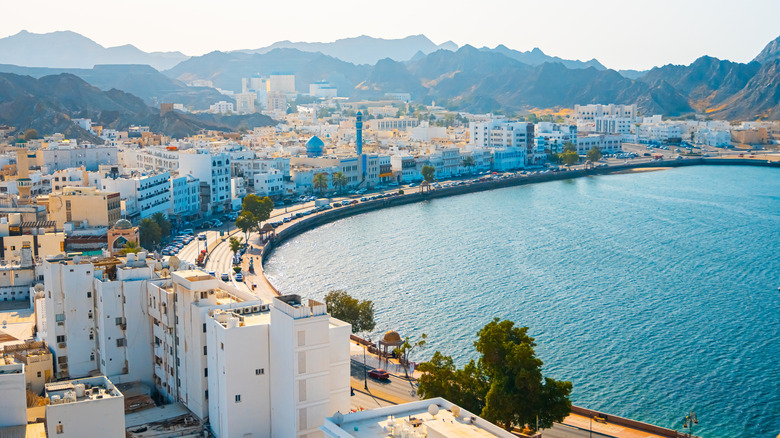
Oman is an interesting choice to make the list of alternative destinations to Europe, and it comes with lots of caveats travelers have to be aware of before heading there. While Oman is often considered a more tolerant, open alternative to other spots on the Arabian Peninsula, this is only partly true. Freedom House ranks the nation low on civil liberties and freedom of expression, which extends to written laws plus loads of implicit rules of public conduct, often centered on shows of politeness. Displays of anger are a big no-no, holding hands is frowned on, criticizing the sultan is dangerous, and even gossiping about him is a crime. Women also have to keep their shoulders, chest, and legs covered, even in summer when temperatures can breach 104 degrees Fahrenheit (40 degrees Celsius). That said, many solo female travelers praise Oman as one of the safest hidden gem destinations. Bearing all this is mind, tourists are welcome, though the country's tourism industry is still getting established.
Most travelers to Oman will likely have its capital, Muscat, at the center of their trip. Best accessed via Muscat International Airport (MCT), Muscat and its white walls highlighted by the thin minarets of countless exceptionally beautiful mosques create a truly awe-inspiring skyline against the Hajar Mountain range. On the city's seaside, the Gulf of Oman's warm, blue waters extend outward from a curved waterfront lined by beach after beach. The grand Sultan Qaboos Grand Mosque is a particularly impressive landmark that has to make it onto your itinerary. Meanwhile, the Mutrah Souq bazaar on the east side of the city is a massive, labyrinthine market that you could spend hours prowling.
Macao Is A Fascinating Blend Of East Meets West

Visitors to Macao might wonder about its old, blatantly Western architecture with neon Chinese characters stuck to the facades or why people there speak as much Portuguese as they do Cantonese. It's all because Portugal colonized Macao (sometimes spelled Macau) until 1999, when control over the region reverted back to China. Now, Macao is a unique blend of Eastern-meets-Western culture packed into a tiny district no bigger than 13 square miles and with a population of about 694,700. The first quarter of 2025 alone saw nearly 10 million visitors flood into the city, so it's well-equipped to handle tourists. Of these travelers, 93.1% came from mainland China, Hong Kong, and Taiwan.
A truly fascinating destination, Macao is a place where the 17th-century Ruins of St. Paul's College sit next to narrow strips of streets that wouldn't look out of place in Hong Kong or Beijing except for the Portuguese on their signs. Meanwhile, Senado Square looks copy-pasted from Milan or Vienna but splashed with pastel-hued coloration. Labeled both a UNESCO World Heritage site and Creative City of Gastronomy, this region's mixture of cultures also produces some one-of-a-kind culinary fusions.
The northern half of Macao, north of its harbor, takes only about an hour to walk across. Along the way, green spaces like Guia Hill Municipal Park, five-star hotels like Wynn Macau, and whacky, Doha-reminiscent architecture like that of Casino Lisboa contribute to a place that's fun to wander around to your heart's content.
Ready to discover more hidden gems and expert travel tips? Subscribe to our free newsletter for access to the world's best-kept travel secrets.
Read the original article on Islands.


